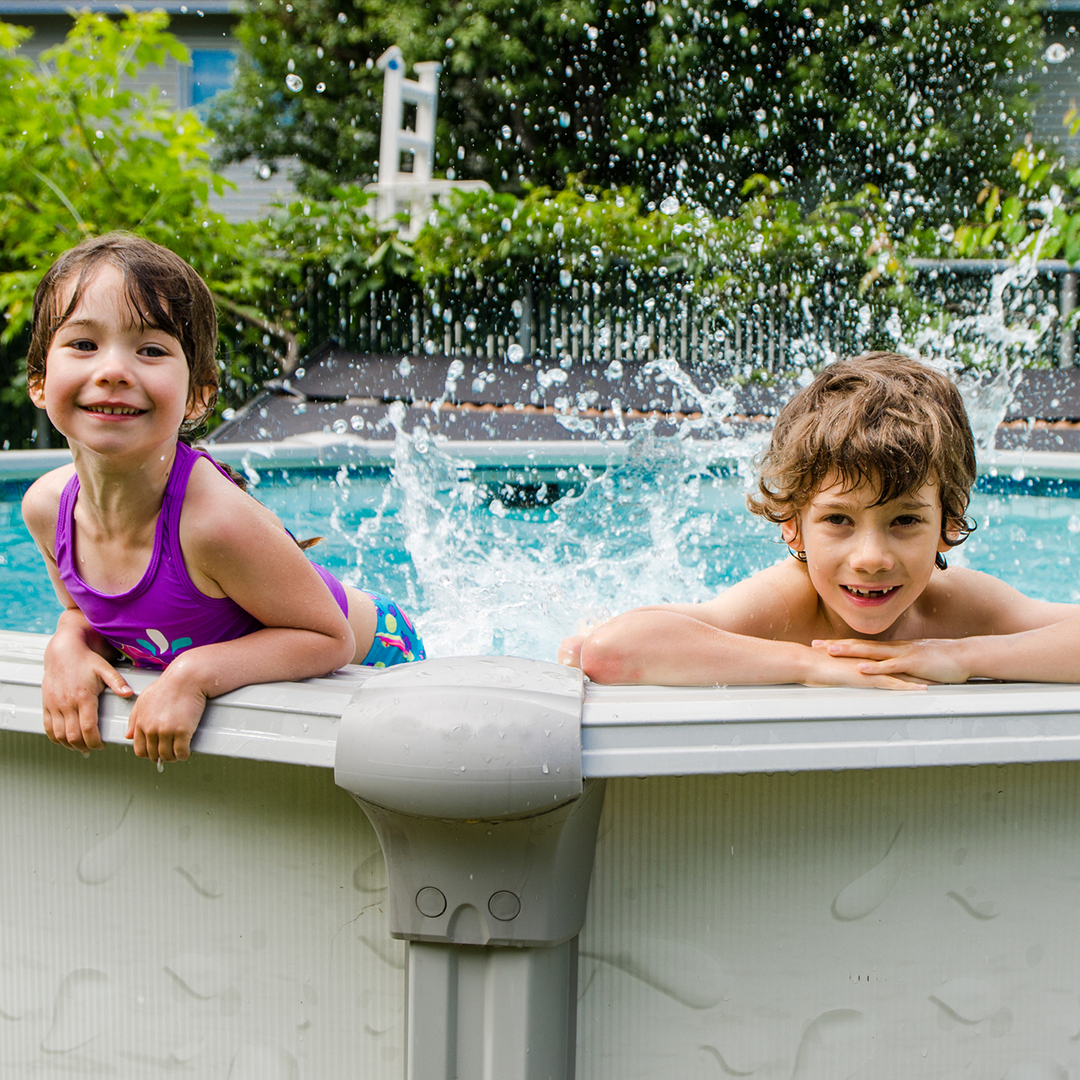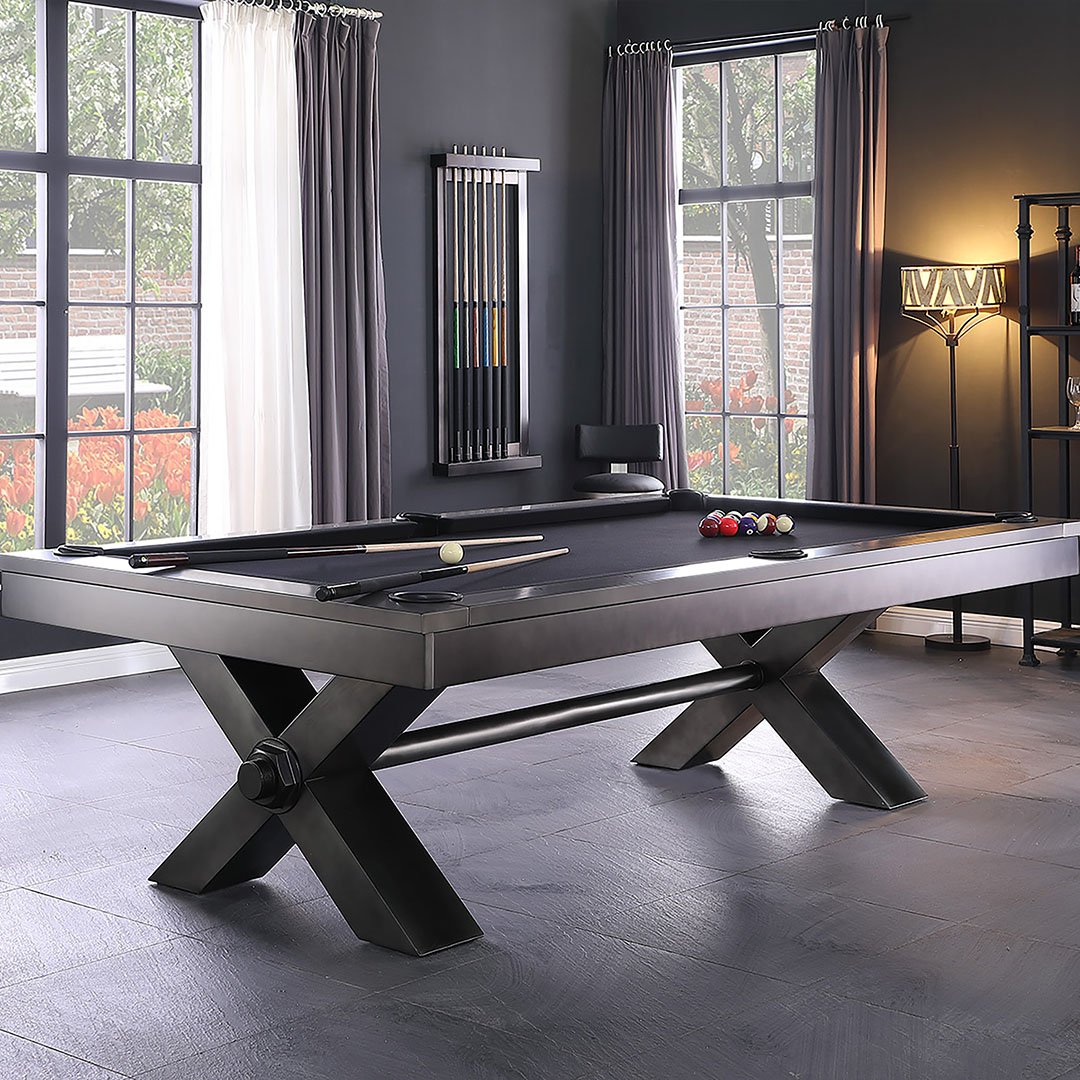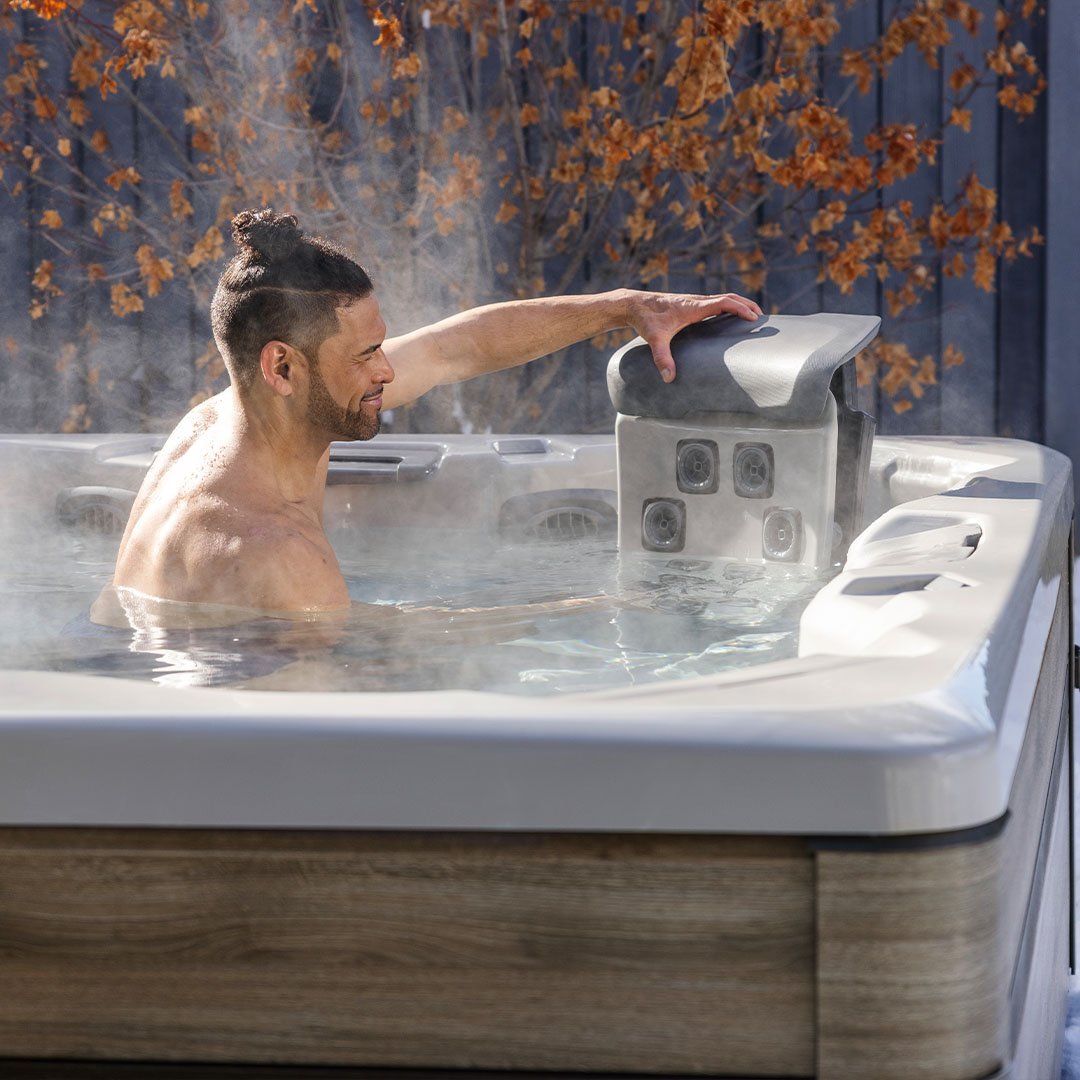Above Ground Pool Maintenance Best Practices
Above ground pool maintenance is essential to keep your pool clean, safe, and ready for swimming. By following some simple daily, weekly, and monthly pool maintenance tasks, you can easily maintain proper pool water chemistry and clarity. Read on for a complete guide to above ground pool care and cleaning.
How to Clean and Maintain an Above Ground Pool
Learning to clean an above ground pool doesn’t have to be difficult or time-consuming. Using a schedule and the right tools to maintain an above ground pool means you'll have a sparkling clean and safe for swimming all season long.
Daily and Weekly Pool Maintenance Checklist
Every day, use a leaf skimmer to remove any debris from the pool's surface. Also, brush the pool walls and floor with a pool brush at least once a week. The brushing helps loosen debris and prevents algae growth.
Check and empty the skimmer baskets and pump strainer baskets regularly to remove collected debris. Test the pool water chemistry daily with test strips to monitor pH, alkalinity, and chlorine levels. Based on the test results, add chlorine or shock as needed to maintain proper sanitizer levels.
It's recommended to run the pool filter and circulation system for at least 8 hours per day for proper filtration.
Monthly Pool Maintenance Tasks
Once a month, you should deep clean the pool filter according to the manufacturer’s instructions. For sand filters, backwash regularly to rinse trapped particulates from the sand. Use a pool clarifier monthly to help filter out cloudy water by causing the particles to clump together for better filtration.
Inspect the pool ladder, rails, and hardware monthly. Remove any debris or corrosion. Give the ladder a good scrubbing as needed. The pool should also be vacuumed thoroughly each month to remove dirt from the bottom.
Pay extra attention to corners and crevices where debris collects.
Check your supply of chemicals each month and restock anything that's running low to ensure you stay on top of water treatment.
Seasonal Maintenance
When opening or closing the pool for the season, there are a few other tasks you'll want to check off your pool maintenance checklist:
- Clean the entire pool surface with a specialty vinyl pool cleaner to remove oils and prevent buildup.
- Lubricate and replace any worn gaskets or O-rings in the filtration system.
- Drain and replace old diatomaceous earth (DE) filters.
- Replace torn or damaged pool liners. Patch any small holes.
- Winterize the pool before freezing temps with a cover, water tubes, and winter chemicals.
Important Tips for a Clean Above Ground Pool
Maintaining proper water chemistry is essential for a clean and healthy above ground pool. Here are some pool maintenance tips:
Test water 2-3 times per week and balance pool chemicals as needed. Keep pH between 7.2-7.6 for optimal sanitation. Shock the pool weekly or after heavy use to restore proper chlorine levels. Maintain 1-3 ppm free chlorine for sanitation. With a mineral system, use 0.5-1 ppm.
Regularly clean and backwash the pool filter for optimum circulation and clarity. Use a clarifier weekly to gather particles together for better filtration. Clean the pool walls and floor thoroughly each week to prevent algae and buildup.
Essential Tools and Accessories for Pool Maintenance
Having the right tools makes pool care much easier. Below are some essential items for maintenance:
- Pool skimmer for removing leaves and debris from the water's surface
- Pool brush with an extendable pole for scrubbing pool walls
- Handheld leaf vacuum for cleaning pool floor
- Pool filter pump and hoses for circulation and filtration
- Pool testing strips for pH, chlorine, alkalinity, and hardness
- Pool chemical test kit with vials and solutions
- Residential sand filter system or replaceable DE filter
- Submersible pool vacuum for thorough periodic cleanings
- Pool clarifier to gather particulates together
- Pool cover and water tubes to prevent evaporation and debris
Water Testing and Chemical Balance
Water testing and balancing pH for optimal pool maintenance are crucial. Here's what you need to know:
- Use test strips or a chemical test kit to check pH, chlorine, alkalinity, and hardness levels. Test the water 2-3 times per week, especially during summer use. The ideal pH is between 7.2-7.6. Below 7.0 is acidic and can damage the pool. Above 7.8 reduces sanitizer effectiveness.
- Total alkalinity of 80-120 ppm makes pH easier to adjust. Values above 120 ppm make pH adjustment more difficult. Maintain proper chlorine levels for sanitation and clarity. 1-3 ppm free chlorine is recommended, or 0.5-1 ppm with a mineral system.
- To lower pH, use a pH decreaser. To raise pH, use a pH increaser if the level is too low. Always adjust alkalinity before adjusting pH. “Shock” the pool weekly by adding an oxidizer to restore chlorine levels after heavy use.
Read our guide on essential chemicals for pool maintenance for more information.

How to Get Rid of Algae in an Above Ground Pool
Green, black or mustard yellow algae is undesirable in any pool. Here's how to get rid of it:
Understanding Algae Growth
Dealing with algae during maintenance can be a pain. Algae spores are always present and will grow if conditions allow. Warm water, sunlight, and low sanitizer levels can cause algal blooms. Green algae first appear as small green dots on walls or floors. Black algae look like black dots or smudges. Yellow mustard algae forms in clumps.
Getting Rid of Algae
Cloudy water is often the first sign of microscopic algae growth. Ensure chlorine levels are 1-3 ppm free chlorine. Shock the pool with an oxidizer and maintain proper pH. Run the filter for 24 hours until the water clears. Use a clarifier to clump particles for better filtration. Brush walls and floor to loosen debris. Vacuum to waste if possible.
To fully eliminate algae:
- Shock with 2-3x normal oxidizer dose. Heavy algae may need 5x the normal dose.
- Adjust pH to 7.2-7.6. Algae thrives at higher pH.
- Add algaecide according to label instructions.
- Run the filter for 2-4 hours daily until the algae is gone. Use clarifier.
- Brush walls and vacuum the pool thoroughly to remove dead algae.
- Repeat the process until all algae is completely gone.
Winterizing Your Above Ground Pool
Winterizing properly is crucial to protect your pool from freezing damage.
- First, clean the pool walls and floor thoroughly before closing. Remove all debris with a thorough vacuuming and scrubbing. Balance pH and alkalinity. Shock the pool water with an oxidizer per the manufacturer's instructions.
- Lubricate and replace any worn gaskets and o-rings in the pump and filter system. Drain the water level 1"-2" below the skimmer opening. Disconnect and store all hoses.
- Insert a winter plug in the skimmer and return jet openings where the water drains from the pool. This seals the openings.
- Place an inflatable air pillow in the center of the pool. The pillow displaces water and acts as an ice compensator in cold weather.
- Cover the entire pool with a pool safety cover, draping the cover over the side ledges. Secure the cover in place with a cable system.
- Periodically clean the cover during winter, removing any excess water that accumulates. Use a pool cover pump or siphon to remove the water so it does not strain the cover.
How to Vacuum an Above Ground Pool
Regular vacuuming removes dirt from the pool floor for clearer water. Here's how to vacuum an above ground pool manually:
- Assemble the vacuum head and attach it to the telescopic pole. Attach the vacuum hose to the vacuum head. Submerge the hose until it completely fills with water. Connect the hose to the skimmer fitting or dedicated vacuum fitting.
- Lower the vacuum head into the water and move it across the pool floor to vacuum up dirt and debris. Remove large leaves and debris with a skimmer net first to make vacuuming easier.
- After vacuuming, backwash the filter to rinse all the debris out of the filter media. For sand filters, see the next section.
Vacuuming with a Sand Filter
To vacuum an above ground pool with a sand filter:
- Assemble the vacuum equipment as described above. Attach the hose to the skimmer or vacuum fitting on the filter system. Vacuum the pool floor until clean.
- When finished vacuuming, turn the valve on the filter to the "backwash" setting. This reverses the water flow to send it backward through the filter. This cleans out the accumulated debris from the sand bed.
- Next, turn the valve to "rinse" for about 1 minute. This setting rinses clean sand through the filter bed.
- After rinsing, return the valve to the normal "filter" position. The system is ready to resume regular filtration.

Pool Chemicals Guide and Tips
Proper pool chemicals keep an above ground pool clean, balanced, and clear. Follow these tips:
- Chlorine sanitizes the water. Maintain 1-3 ppm, or 0.5-1 ppm with mineral system.
- pH increaser raises pH. pH decreaser lowers it. Adjust to the 7.2-7.6 ideal range.
- Total alkalinity increaser raises alkalinity. Acid lowers it. Keep 80-120 ppm.
- “Shocking” with oxidizers restores chlorine after heavy use.
- Clarifiers make particles clump together for better filtration. Use weekly.
- Algaecides prevent and kill algae growth.
- Mineral systems use silver, zinc, and copper ions to sanitize water.
- Enzymes break down oils and organics that cause cloudy water.
Always follow chemical manufacturer instructions for proper handling and dosing. Never mix chemicals together.
Installing and Maintaining an Above Ground Pool Ladder
Installing ladders for easier pool maintenance and access is essential. Read our complete guide for installing an above ground pool ladder for more information. Remember, it is always best to use a professional for pool projects to make sure they are done the right way, the first time.
Choose a ladder height appropriate for your pool height. Check local codes for any requirements. For flat-bottomed pools, attach the bottom plates to the top ledge with mounting brackets. On sloped pools, wedge the bottom rails beneath the top ledge. Attach the top rails to the pool ledge.
For actual installation, follow the manufacturer's instructions for installation.
For maintenance, inspect the ladder regularly for any loose, broken, or corroded parts. Tighten hardware if needed. Lubricate the rails and other moving parts. Use a pH-neutral cleaner to prevent corrosion and buildup on the ladder. Remove the ladder during winterization to prevent cold weather damage. Store the ladder indoors when not in use.
Follow these tips for clean, clear pool water all season long. Test water chemistry regularly, scrub away debris, and handle chemicals with care for safe swimming without hassle. Contact your local pool experts for more information or assistance with maintaining your above ground pool.
About Watson's
For over 50 years, Watson’s has been the leading destination for all things pool. Our incredible selection, low prices, and exceptional service make pool ownership stress-free and enjoyable. With Watson’s as your trusted partner, you get:
- Personalized advice from pool care experts who treat you like family
- Year-round support to keep your pool sparkling from opening to closing
- The latest pool products for anytime entertainment from leading brands
- One-stop pool shop for equipment, chemicals, parts and more
- Total satisfaction guaranteed or it’s a free replacement
- Convenience in multiple locations across the country
- The lowest price is guaranteed, or we’ll beat it
At Watson’s, our commitment to selection, service, and savings means you get the most pool for your money. With us as your pool partner, life’s best moments start here. Discover the Watson’s difference today!
Click here to shop top-rated above ground pools for your backyard from Watson's.
FAQs
What chemicals do I need to put in my above ground pool?
Proper chemical balance through regular testing and adjusting of chlorine, pH, and alkalinity levels is crucial for keeping above ground pool water clean, clear, and safe for swimming. Chlorine sanitizes the water while a pH balancer maintains the optimal alkalinity range for chlorine effectiveness; algaecide prevents green algal growth, and shock treatment restores chlorine after heavy use. Consistently monitoring chlorine, pH, and alkalinity with test strips enables proper chemical adjustments to keep pools hygienic.
How do you treat an above ground pool for the first time?
When opening an above ground pool, first test the water's pH, alkalinity, hardness, and sanitizer levels, then balance the chemicals by adding a pH adjuster, alkalinity increaser, hardness increase, and chlorine shock as needed. After achieving ideal chemical ranges, maintain the pool by adding a daily chlorine dose, shocking weekly, and testing chemistry 2-3 times per week. Proper water balancing and sanitization when opening the pool and consistent seasonal monitoring keep the water clean and swimmers safe.










